Blue Ringed Octopus.
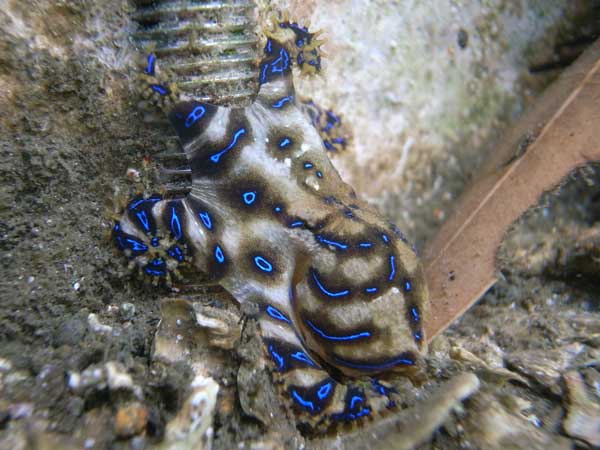
Clever Small And Deadly
The size of a Blue Ringed Octopus is 10 to 20 cm (5 to 8 in). There are four different species of venomous blue-ringed octopuses.
They aren’t a giveaway to predators or even to humans, The Octopus is lurking behind his incredible camouflage, armed with one of the most deadly weapons on earth.
The Blue Ringed Octopus carries enough venom to kill several human beings in just a matter of minutes. How many adult humans do you think I can kill?
Despite its modest size, is packed with enough poison to actually kill twenty-six full-grown human beings. Their bites are usually small and painless, and people often do not know they have been poisoned up until the effect starts to kick in.
Article Overview:
-
- Poison
- Anatomy
- Predators
- Reproduction
- Diet/Feeding Habits
- Habitat/Distribution
- Behavior
- Evolution
- Habitat/Distribution
What happens if you get bitten by a blue-ringed octopus?
After 1-2 minutes, the venom paralyzes the victim by blocking the nervous system that controls muscles from transmitting messages.
The target will remain fully conscious, and Then Death usually occurs as a result of lack of oxygen.
The only way to survive is to get artificial respiration until help arrives.
The first 4 to 10 hours is the most dangerous.
What Is The Name Of the Poison The Blue Ringed Octopus?
The name of the blue-ringed octopus poison is The Chemical and toxin called Tetrodotoxin, and is produced in its salivary glands live bacteria.
How poison is the Blue Ringed Octopus venom?
Tetrodotoxin is one of the most poisoned chemicals produced by any animal, it is dazzling 1200 times more powerful than cyanide.
Has Anybody Got Killed By A Blue Ringed Octopus?
Two people in Australia and one in Singapore. But Many have come close to death.
- Visit Octopusworlds.com octopus art portfolio.
High resolution art print files to download now
and print in your local or online print service.
🐙Example: image pixel size Resolution: 9984 x 14592 =
Higest print size: 90 x 51 inches or 231 x 131 centimetres
in brilliant print quality 🐙 – PRICE – 5$ for 1 download
I am deeply thankful for your support people

Trademark feature
They have the characteristic blue rings around their bodies, even when they change colors to blend into surroundings those bluish identifying marks are there.
They are normally a yellowish coloring but you may not see them in that original color. With the location where they live it can often be a brownish or a cream color that they will portray. That way they can really blend in well to the surroundings. The bluish coloring of them is quite distinct though so you should always be able to determine them from other types of Octopus.

Anatomy Invertebrates = No Bones
The body of the Blue-Ringed Octopus is very impressive. They are very small in size but their anatomy allows them to be very powerful. The body is very flexible due to the fact that it don’t have a skeleton. They are able to move very quickly through the water as well. The body is very small with an overall length of about 8 inches. However, the arms can spread very wide when they are trying to capture prey.
They are usually seen swimming in the water instead of crawling. They do lay sideways though which is why it is so easy for someone to end up stepping on them in the water. What is unique is that such a small creature can have such a powerful amount of venom in their bodies. It is a huge mystery when it comes to the design of their anatomy.
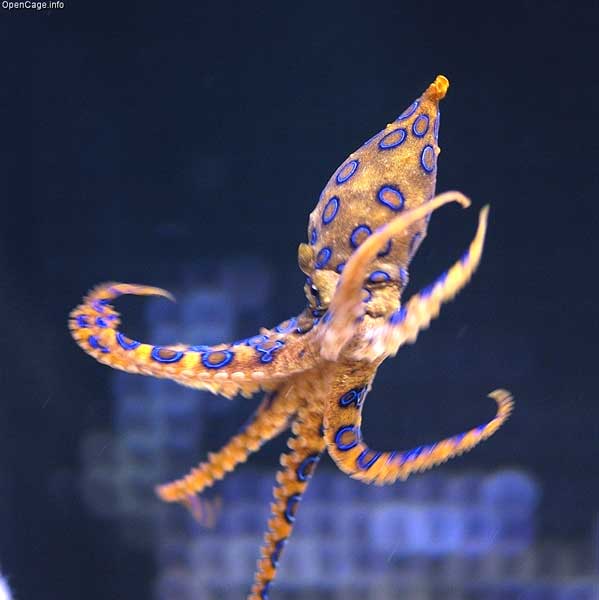
Evolution
There are experts out there with an explanation for that though. They believe that this powerful venom is the result of evolution. It has made it a powerful source to be reckoned with in the water. They believe that the venom has only continued to get stronger over time.
Evolution is a huge issue with any animal, it is a way to see where they once were and how that has allowed them to be shaped today. Yet there isn’t very much to know about the Blue-Ringed Octopus. It is really a mystery about how they came to be about. They have a body that is very different from other types of creatures that live in the water.
They have proven high levels of intelligence as well as the ability to adapt to their environment. It is believed that the ink sac they have is one part of evolution. It offers the Octopus a way of escaping predators so that they can survive.
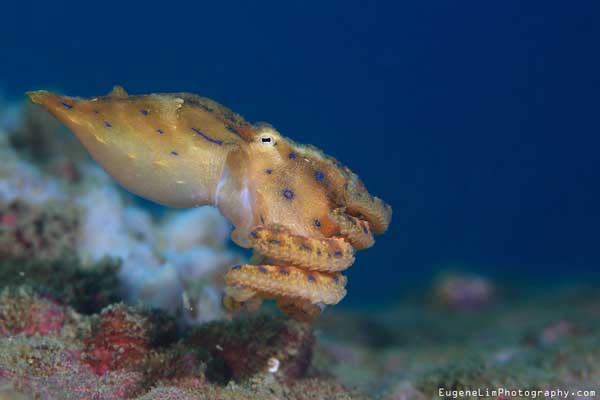
This is one of the most aggressive species of Octopus in the world. They aren’t as likely to run and hide as they normally would. They also will fight with other Octopus in the area to be able to keep their food and shelter to themselves. With most other species they simply ignore each other but that isn’t the case here.
The venom that the Blue-Ringed Octopus is able to release is a huge concern for humans. In fact, it is the only type that is able to kill humans if they get bitten by one of these octopuses. That is a prime reason why many people avoid bodies of water where they happen to live. They worry about stepping on one and it biting in retaliation.
How can I see If The Blue Ringed Octopus is aggressive?
Answer: It will give you a fair warning by Flashing Bright Blue Rings.
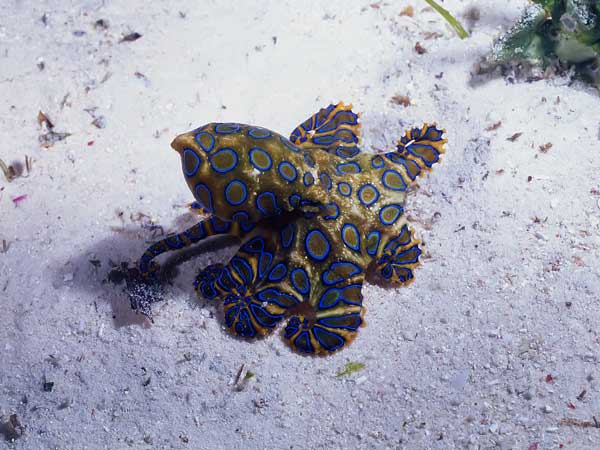
Where do I find the Blue Ringed Octopus? – Habitat/Distribution
Indian and Pacific Oceans (Shallow waters) are the Blue-ringed octopus’s habitats.
This type of Octopus isn’t as widely distributed out there as many others. They are known to reside in certain areas of the Pacific Ocean. The largest groups are in the waters around Japan and Australia. Determining the exact locations of them there can be difficult as they move often. They continue to find new homes every couple of weeks for safety.

Diet/Feeding Habits
They generally are able to find plenty to eat due to the diverse nature of their diet. They hunt at night and thanks to their excellent vision they are able to find food with no trouble at all. They consume shrimp, fish, and hermit crabs. They are successful hunters due to their speed. They are able to place venom into the body of their prey in very little time.
This process is one that completely paralyzes the prey. This gives the Blue-Ringed Octopus plenty of time to come in and to use its powerful beak to break the shells. Then it can consume the food source inside of it. They are also known for their cannibal behaviors. Yet it is important to point out that they consume each other for territorial rights and not due to the urge to find food.
Reproduction
As I mentioned they are very isolated due to the aggressive nature they portray. They do change that tune though when they are ready to take part in mating. The males and females will stay in the same area for a couple of days in order to for the mating to occur as many times as possible during that period of time.
The males love the act of mating, and so the females have to push them away after a couple of days. They will be persistent which can result in some bitter battles taking place. The females are ready by then to be left alone and they will do whatever they have to in order to get that message conveyed to the male.
Once they are done with the mating process they will go their separate ways. The females will have about 50 eggs that develop in their bodies. They will fertilize them with the sperm they gathered from the male. Once she has successfully done that she will place them securely under her arms. The suctioning power will keep them in place until they are ready to hatch.
Both the males and the females have a very short life span. The males will die soon after mating is finished. This can be within a couple of days or they may have a few weeks of life left. For the females, once she has those eggs to care for her own needs are no longer a priority. She will begin shutting down too with her death being very close to the hatching of her eggs. The average life span for this Octopus is 1 ½ year.
Predators
There are quite a few different predators out there that the Blue – Ringed Octopus has to deal with. They include whales, eels, and birds. These types of predators are able to get to them very quickly and with the element of surprise on their side. There are times though when these predators become the prey due to the Octopus getting a good bite. That will immobilize them. The Octopus can either feed or it can swim away.
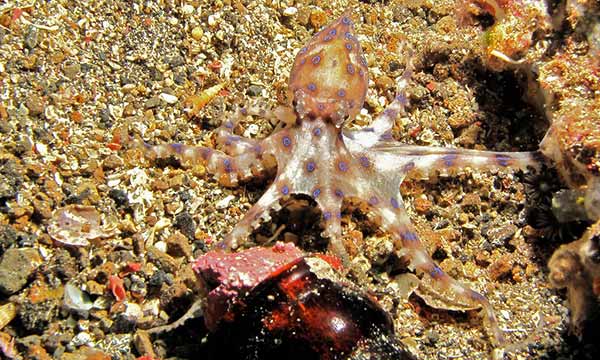
Due to the very danger of these octopuses, they are also heavily hunted by humans. They figure it is best to get rid of them from the water than to live in fear of them. Most people don’t seem to think there is anything wrong with hunting them so that people can be safer in the water.
Please leave a comment or ask any questions. You are also welcome to share a story, experience or a link to something interesting about octopuses.
Three hearts, a massive brain, and blue blood, they navigate unlike anything else. The earliest octopus fossil is Pohlsepia, which swam the oceans 296 million years ago.
Learn More – Wikipedia.org –Blue-ringed octopus









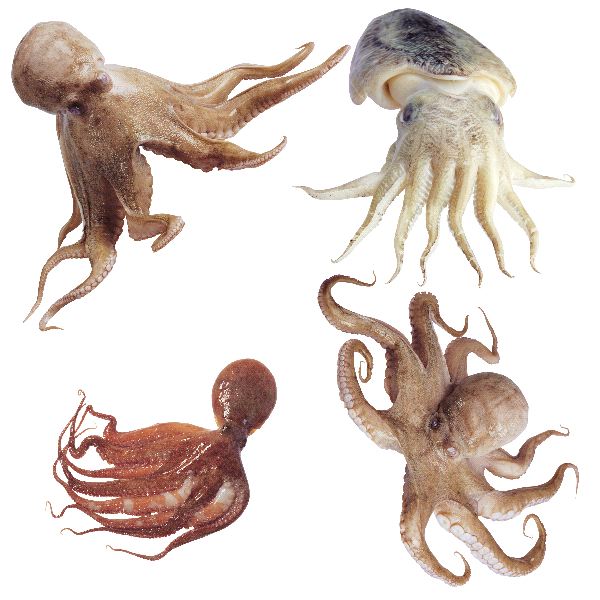


Hi! Thanks for the information on this little guy. It’s actually, despite the danger, one of my favorite octopi. They’re so pretty! Tiny little guys too. I don’t live near an area where I could see one though, which is a bummer. Pretty colors usually indicate danger in small animals like this though, so I knew they were dangerous. I can’t help but like how they look. Octopi don’t look usually cute to me, except this one.
Wow! The blue ring octopus is really dangerously unique. A very beautiful animal with special features and looks but then, very dangerous to humans. The death an individual would encounter as a result of the bite if this octopus is really a painful one and blocking of oxygen is a suffocating experience. Wow! Thanks so much for given out so much information about this blue ringed octopus
It is very nice ti learn about this beautiful creatures. I have seen the blue ring octopus in cartoons before and I thought they looked cute. I didn’t know they were venomous and that it was that powerful. Its sad that they have a short lifespan that comes to an end when they end mating. Well, I like that they know how to protect themselves true disguise and the ink too. Thank you for another educative post.
Wow. I have always thought octopi are fascinating but I did not know there is one that can kill humans! I am so glad I saw this so I can be aware of the danger of stepping on a blue ringed octopus.
They are gorgeous and I am sure they need to be aggressive to survive given their small size. I am curious why they have such a short life span? Most intelligent animals live longer. The fact that they can attain such intelligence in such a short time makes their intelligence even more impressive. Even human children don’t learn as fast as an octopus.
Thank you for this gorgeous post full of useful information and beautiful photos of the blue ringed octopus.
Wow such an interesting creature! I find it so interesting that this blue ringed octopus has flashing bright blue rings. I never even heard of this type of octopus so I found your article very interesting and the pictures are amazing as well! Keep up the great work with informing us people about these creatures.
Awesome article,you have done a great job writing about this special animal called octopus,all the characteristics stated are great;the body of the Blue-Ringed Octopus is very impressive. They are very small in size but their anatomy allows them to be very powerful. The body is very flexible due to the fact that they don’t have a skeleton,I got to know all these features from your post,I’ve learned and more enlightened on this wonderful animal,thank you for sharing
I’m from Australia and we are warned about the Blue Ring Octopus when growing up. Lucky I have never seen one and I don’t really go out of my way to find them. They are beautiful to look at but very dangerous indeed. Recently I have read a few articles about the intelligence of these amazing animals, it is one of the only animals I don’t eat due to this
Wow I didn´t know that this octopus could be that dangerous, especially with its venom. This article was quite intriguing for me because I like the animal world and discover what new species are out there and what do they do to survive their environment. And about this type of octopus was very fascinating.
Its really nice learning about these octopus and this one in particular seem unique to me. I love its characteristic of this blue ringed octopus. Learning about its defense mechanism and looking at its poisonous nature, I’m really surprised. I look forward to learning more about this wonderful creature. Thanks for sharing.
Hello there, thanks for sharing this wonderful post. Reading abut an octopus have been one of my favorite thing doing for some time now. And learning about this blue ringed octopus is quite fun for me. I am surprised knowing its doesn’t have a bone and its being a predator is on a whole new level. I’m pleased to have learned what I have here.
Our country is within the Pacific and blue ringed octopus can be found in some islands. Here in the Philippines, local marine biologists would actually describe these beautiful creatures as non aggressive and shy. That’s why it’s easy to distinguish if they are being threatened or provoked because their signature blue rings will appear. It is advised to just give them enough space so they won’t be aggressive. Knowing it can kill humans in a matter of minutes gives awareness for many. It is a matter of respect for all species, and allowing them to have their own space. All living things are fascinating in their own different ways, they can be harmful, they sustain life, they add beauty to nature. Still the bottomline is respect for all so we can be able to avoid problems regarding this matter. Thank you for sharing this information.
Thanks for this very interesting and informative article on the Blue Ringed Octopus. All your pictures were excellent and vey colorful. I liked how you covered absolutely everything I could ever want to know about this animal. I really appreciate the audio button on this article, thanks for adding it. As I’m dyslexic that feature make it a lot easier for me to know what your article is all about with out me struggling to read it. I can understand everything in this article because of this feature. I only wish every one else would put this awesome button on their articles. Thanks you again for that.
Thanks to your article I now understand why people are hunting this beautiful creature down. I just wish there was a better way to safely have people swim and still not kill these animals.
Hello
Very interesting article
I live in Greece and have seen some species of octopus. I’ve never heard of this kind of octopus, as the photos are amazing too
It also impressed me that they can gain such intelligence in such a short time of life
I understand it’s a huge mystery, very dangerous with the poison rates it has
Thank you for another educative post.
Thanks 🙏 You are very welcome, and thank you for reading the post :-)Maybe this post also could have your interest http://octopusworlds.com/octo…
I will highly appreciate if you would give this site a rating:-)))
Hi Lynne Clay:-) I am very pleased to know that you like the audio feature, I can see on my Analytics that more and more people around the world are using it, so I guess I will keep it.:) not many people have been killed by a blue ringed octopus, because they are smart and fast and they will not let you step on it, it is mostly when people out of ignorance pick it up and cuddle it. Have a wonderful day :-)
hello in the Philippines :-) I absolutely agree with you, there is no need to be afraid only need to be aware and give respect. Thanks for the inside off marine biologist I really appreciated, Have a wonderful day :-)
Hi Chole. Thanks 🙏 For your comment, maybe this post also will trick your imagination :-)http://octopusworlds.com/
If you were to give the site a rating I will very much appreciated.
Have a glorious day :-)
Hi Dane thank you for using octopus worlds, Here is A post about octopuses defense in general,http://octopusworlds.com/octo…
Also if you go to specific species of octopuses they will be more about the individual defend make an essence
Also if you go to specific species of octopuses they will be more about the individual defend make an essence
Have a good day
Hi Barbara, don’t worry they won’t just attack you for no reason, and they won’t let you step on it by accident either, but if your are bitten you nedd to be saved if artificial respiration or respiratory arrest if you like:-))) :-)Many of the octopus species around the world are very interesting here’s the link to different species//octopusworlds.com/type…
Especially the mimic octopus is one of my favorites //octopusworlds.com/mimi…
Seize the day and have a good one :-)
Hi Marvin thanks for sharing, you have the craziest variation of wildlife in Australia, I live in Denmark and there’s almost none real dangerous animals, no volcanoes earthquake or other dangerous weather phenomena :-) and thank you for not eating these incredible beings :-) if at least people will stop eating octopuses that are alive That would be a great comfort,
That would be a great comfort,
Have a wonderful Day
The Octopus is an amazing creature. I can tell you went into overtime on your research here. I see that movie: It came from beneath the sea(which need I say is a good movie dealing with a monstrous octopus).
I do wish we did know more about this creature it sounds amazing and worthwhile to see documents on it.
Glad you made this post. It has really opened my eyes into seeing just how amazing something we barely see in the ocean can be.
What an interesting article; I really enjoyed reading it. I first learned about these fantastic little creatures a couple years back when some friends were discussing areas they’d like to vacation. The only drawback to the private beach areas they liked to visit was the need to watch for those distinctive blue circles on the blue ringed octopus.
They really are fascinating creatures. As poisonous as they are, I would love to get the chance to see one live in their natural habitat. Are they poisonous to humans just by touching them in general? Or does one have to be bitten by the octopus to have the poison injected into them? Thanks for sharing such interesting information!
It is disheartening that the Blue-ringed Octopus is deadly. It looks quite beautiful and someone might just stand there to admire it only to be bitten! So sad to not even know that you have been bitten.It is so scary that they can move very fast, bite you and you might not know immediately.
Thank you for such detailed information. This is very helpful and I hope a lot of people get to read it.
Thanks, Carlo, The blue-ringed will not let you step on him by accident in the tide pools or something, so no need to worry, they rater wanna live another day, and not kill anyone:-) you should just never pick up any animal that you don’t know, especially if it is flashing its iridescent blue rings and yes it can kill adult humans within minutes
.
Have a good day:-))
Hi Shan, Yes world most venomous octopus hapalochlaena maculosa or the greater blue ringed octopus hapalochlaena lunulata, but they are only dangerous if you receive an octopus bite. The blue-ringed will only attack if it is provoked or stepped.
I would also love to see one in real life just eating crabs shrimp and small fish :)
Have a beautiful day
Wow! I am so surprise to note that these beautiful and special species are as dangerous and can be deadlyas carefully described here. I once saw this blue ringed octopus on TV and I admires how beautiful it looks and how i will love to know more about them. Their clever and deadly nature is surprising and wild and I am glad I know all these before trespassing on them. Thanks for this educative review.
Wow, I’ve been reading about octopuses for a while now and I’m just coming across the Blue ringed octopus. I’m really surprised at how endowed this creature is and the beauty its made of. I’ll agree with the satin that want you don’t, you don’t know. The most surprising part of this article to me is that the blue ringed octopus can kill 26 adults at a time with its venom, that’s incredible an aquatic like that. This post is really educating and interesting, I enjoyed every bit of it. I love you
As pretty as this little gem might be, I think I will be staying far away from this one. Pictures tell a good story and that’s good enough for me.
Two questions though. As venomous as this little creature is, have scientists been able to develop some kind of antidote to this? And, have they been able to use tis venom for any other kinds of treatments for disease.
Treatments and cures come from the strangest places some times so I was just wondering if that was the case with this little wonder of the sea.
Wayne
rich
flying
Its good
Wow I am so Scared of going in the ocean
its fake
Great post!
Great post!
w88Formerly the good skim is finished, clear whatever entries it finds, peculiarly ones in the register.